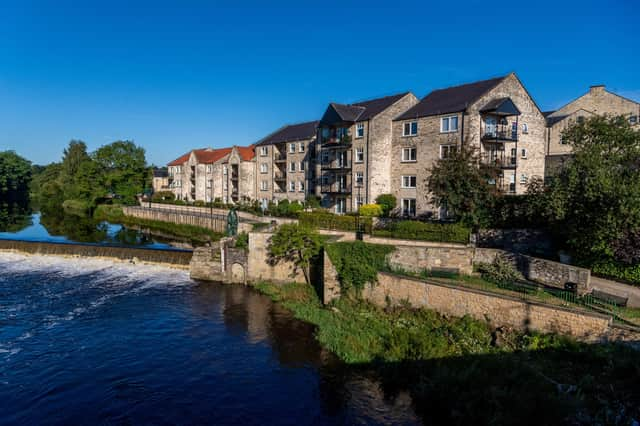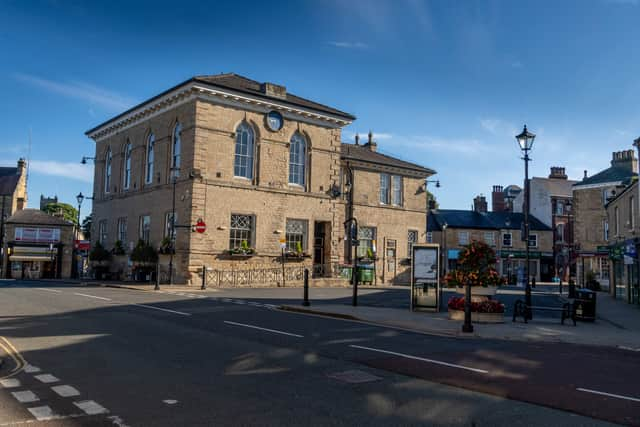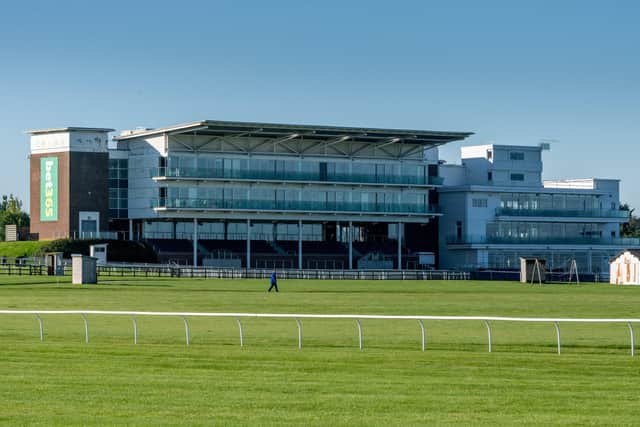When Wetherby had its name up in lights - thanks to Judi Dench and Vanessa Redgrave


Film historian James Clark once observed that naming a film after a country, city or specific location had “potential for being a great branding opportunity”.
He cited Casablanca as being arguably the greatest example and went on to list other communities, large and small, that have found themselves as film titles including Philadelphia, Fargo and Notting Hill.
Advertisement
Hide AdAdvertisement
Hide AdThere’s one movie, however, that didn’t get mentioned. It’s David Hare’s 1985 film, Wetherby. It starred our very own Dame Judi Dench and Vanessa Redgrave, along with the likes of Ian Holm, Joely Richardson and Tim McInnery.


It’s a mystery drama and it’s suggested that Hare chose the title and location having used the branch of the British Library in nearby Boston Spa for research purposes in earlier projects, and stayed in Wetherby during these visits.
The film would probably have been screened at Wetherby’s Cinema on Caxton Street. It is officially the Wetherby Film Theatre, and has been celebrating celluloid in this location for over a century. It first opened in 1915 but there was hardly time for it to screen a few “flicks” before it closed again, so that it could be used for billeting troops going off to fight in the trenches.
It was sold to a Leeds-based consortium, who changed the name to The Raby Picture House. Today, the cinema is much-loved. It’s had quite a few ups and downs – it saw bingo, and then a few years of closure – but is now seen as a valuable community asset.
Advertisement
Hide AdAdvertisement
Hide AdMuch of the land in and around Wetherby was owned by the Cavendish family, and they had considerable input into how the town was developed, and what it should look like. And then, rather abruptly, the Cavendish link was severed. The sixth Duke of Devonshire washed his hands of the town in 1824, and, apart from a single house, sold the lot – and used the money in maintaining the upkeep of his seat at Chatsworth.


When the scribes taking notes for the Domesday Book turned up, they wrote the town’s name as Wedrebi – not so far from what we pronounce today. In the Anglo-Saxon, that meant “settlement on the bend of the river”, and that was just about right.
The river is, of course, the Wharfe, and picnics on its little beach and grassy area near to the waters and adjacent to the bridge (Grade II listed) are hugely popular to this day. The right to hold a market in Wetherby was first granted in 1240, and that was a deal with the Knights Templar, who held land hereabouts. It still goes on, centuries later, every Thursday, and there’s also a farmers market every second Sunday of the month.
Wetherby is a floral place, priding itself on its involvement with the Britain in Bloom movement, as well as many other similar competitions, and it is also home to regular Artists Around Wetherby events.
Advertisement
Hide AdAdvertisement
Hide AdIt’s a town and full of contrasts and quirky facts. On the one side there’s the Thorp Arch Trading Estate, which offers employment to many residents and on the other there’s the restrained Palladian elegance of nearby Bramham Park.
The odd thing about this wonderful mansion is that no-one really knows who designed it. Some experts believe that it was the work of its first owner, a young man called Robert Benson. He’d been on a Grand Tour, and had been mightily impressed with the buildings he’d seen in Italy. He returned to get things rolling in about 1700. He obviously worked with a talented draughtsman, but what emerged is spectacular.
He didn’t just concentrate on the house and its interior, his vision went further, and the landscaped grounds became just as lovely. Over the years, many “follies” were placed here and there and today they are of such special interest that they are Grade I listed (as is the house), which is a pretty remarkable accolade.
Wetherby is home of the original Wetherby Whaler (the acclaimed fish and chip shop chain), and that’s not so far from an intriguing Georgian bath house in Jubilee Gardens, where gents of quality used to go for a refreshing dip in pretty icy waters.
Advertisement
Hide AdAdvertisement
Hide AdAmong its notable visitors was J W M Turner who sat on the banks of the Wharfe and painted the view.
Not many miles away was the only “Stone Frigate” outside London – a naval establishment based not in a port or by a navigable river, but on land. The Admiralty seemed to have had a bit of an identity crisis when deciding on a permanent moniker for the place, for over the years it was called HMS Cabot, Demetrius, Rodney and Ceres.
Someone who probably departed the town without any regret must have been the first curate of the Gothic revival parish church of St James. He was William Raby, who got together a consortium of local businessmen and clergy, and urged them that their place of worship should be a proper church, and not a chapel.
He also banged a loud drum for the building of the town hall. And he got his way in each regard. But, when worshippers finally attended their new church, Raby ruffled quite a few feathers – to the extent that 60 of them put their signatures on a petition to the Bishop of Ripon complaining about his high-handed allocation of pews.
Advertisement
Hide AdAdvertisement
Hide AdFor many people, though, Wetherby is best known for its racecourse. The north bank of the River Wharfe has a long history of racing horses and this is where the story started. In 1878, Wetherby races was taken over by a committee of local sportsmen and after being refused permission to purchase the land and disgruntled by the increasing rent demands from the tenants of Wetherby Ings, it became apparent they would need to find a new course.
The existing racecourse is on land previously owned by The Montagu family of Ingmanthorpe Hall, the large Georgian House you can see from the racecourse today. The land was rented to the race committee and the first meeting was held on March 30, 1891.
But while horse racing has flourished, the town’s rail links remain a bone of contention. Locals were furious when their rail station was one of the first casualties in the Beeching cuts (it closed in 1964). There are many who would love to see the line reopened and given Wetherby’s track record at getting things done you perhaps wouldn’t bet against it happening one day.
Support The Yorkshire Post and become a subscriber today.
Your subscription will help us to continue to bring quality news to the people of Yorkshire. In return, you’ll see fewer ads on site, get free access to our app and receive exclusive members-only offers.
Advertisement
Hide AdAdvertisement
Hide AdSo, please - if you can - pay for our work. Just £5 per month is the starting point. If you think that which we are trying to achieve is worth more, you can pay us what you think we are worth. By doing so, you will be investing in something that is becoming increasingly rare. Independent journalism that cares less about right and left and more about right and wrong. Journalism you can trust.
Thank you
James Mitchinson
Comment Guidelines
National World encourages reader discussion on our stories. User feedback, insights and back-and-forth exchanges add a rich layer of context to reporting. Please review our Community Guidelines before commenting.